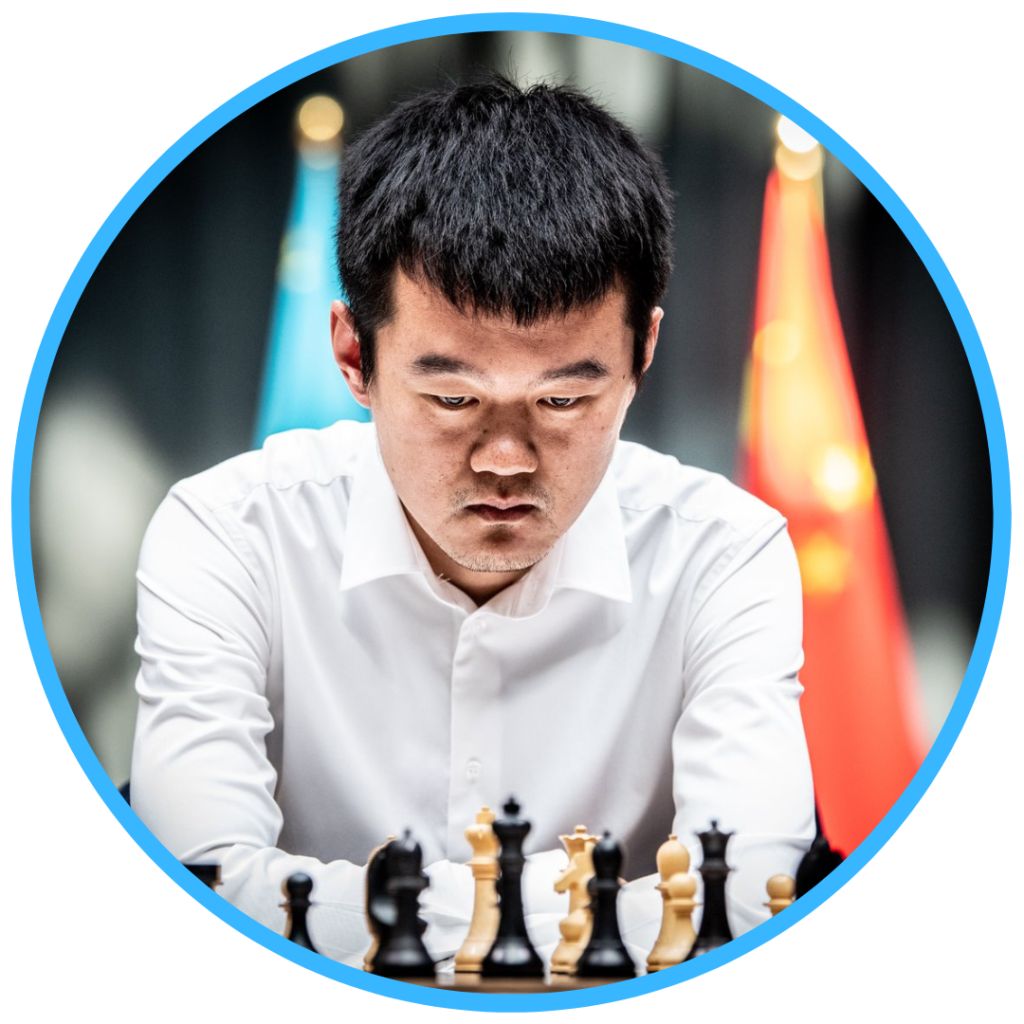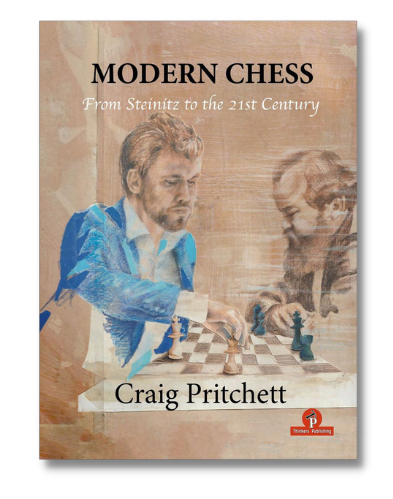In this final article, we take a look at the modern World Champions all the way up to the newly crowned king, Ding Liren.
Anatoly Karpov
1975-1985

The young Karpov made early waves in the chess scene, with many tournament wins under his belt including the 1969 World Junior Championship title. Throughout his career, he would attain over 160 first-place finishes, a peak rating of 2780, and over 100 months at the number-one rating spot. Interestingly, Karpov attained the Grandmaster title in 1970 at 19 years old and would go on to become World Champion only 5 years later.
He placed first at the 1974 Candidates matches which placed him as a (dangerous) challenger for the World Championship title against Bobby Fischer. However this largely anticipated match never happened as Fischer abdicated the title, therefore making Karpov the 12th World Chess Champion by default.
Karpov’s style is quite technical and he is considered to be one of the best endgame players of all time. His games were very much “slow burns” where he would suffocate his opponents gradually. In the book Endgame Virtuoso Anatoly Karpov, Karpov’s endgame technique is showcased. Including this example from when he was only 10 years old:
He would go on to defend his title for a decade, but not without problems as a new Soviet rival, Garry Kasparov emerged. In 1984 the two faced off in a seemingly never-ending match that went on for 5 months. The reason for this was that the title was decided by the first player to win 6 games, a score that neither player could reach. Karpov had quickly taken the lead with a 4-0 winning score after 9 games, and it seemed like he would be the clear winner. However, Kasparov taught the world a lesson in persistence and would fight back to a score of 5-3 for Karpov with 40 draws. After the 48th game, and two consecutive wins by Kasparov, the FIDE president halted the match leaving the result as “undecided” with Karpov retaining his title, and Kasparov earning a re-match right for the following year.
Karpov’s endgame skills were brilliantly showcased in game 9 of their match:
Garry Kasparov
1985-2000

The Karpov-Kasparov rivalry was very big for the chess world and chess history. After their halted 1984 match, the two greats met again in 1985 with regulation changes, as the title would then be decided by the best of 24 games. Kasparov emerged as the victor after 5 wins, 3 losses, and 16 draws. He started the match off with a bang by winning the first game in style:
Looking back at Kasparov’s roots, it was perhaps always clear that he would become one of the greatest players of all time. As a child, he had fully devoted himself to chess and stood out in the Soviet Chess School under Botvinnik’s mentorship. Kasparov learned a somewhat scientific approach to chess thanks to Botvinnik’s tutelage, learning how to study chess and moreover, rigorously prepare for tournaments. He dominated the international chess scene, along with Karpov, with a universal style and deep opening knowledge.
His reign as World Champion was not one without problems, as in 1993 Kasparov and his challenger at the time, Nigel Short, split from FIDE for their match to be hosted by the Professional Chess Association. FIDE however, did not approve, and a mess ensued as there would be two World Championship cycles – a PCA Classical World Chess Championship one, and a FIDE World Chess Championships one. We will not delve into the politics of this time, but the separation would continue for 13 years until 2006 when the titles were unified and administered by FIDE.
Furthermore, Kasparov also became a prominent author, writing books such as the “My Great Predecessors” series, which takes a look at all the greats who came before him, and the “Modern Chess” series which details the evolution and developments of chess. Furthermore, the chess legend also details his own life and career in his “Garry Kasparov on Garry Kasparov” series. Perhaps then it can be argued that Kasparov may be the greatest player of all time not only because of his playing strength, but how much he contributed to chess.
Vladimir Kramnik
2000-2007

The 1990s and early 2000s were chaotic years for chess. With two rival titles and two different formats – where FIDE hosted World Championship knockout tournaments for the title, and the PCA along with Kasparov remained true to the old match style, there is a lot of debate around which constituted the true championship, and therefore World Champion. For the sake of this article series, we will follow the old match format.
Vladimir Kramnik was an elite player throughout the 90s, having joined Kasparov at the top of the world rankings. Kasparov had even deemed Kramnik to be his likely successor and invited him to challenge for the title in a 2000 match. For many reasons, it can be argued that Kramnik was better situated for victory in this match, owing to Kasparov’s 5-year match break, his large role in politics and securing sponsors, and Kramnik’s novel eagerness for the title. With a format of best out of 16, Kramnik did not suffer a single loss and comfortably won 2-0 with 13 draws, making him the first challenger since Capablanca to not lose a game in a World Championship match. The ratio disparity of wins to draws was contributed by Kramnik’s weapon of choice against the Spanish; the Berlin Defense characterized by 3…Nf6, leading to an eventual queenless “Berlin Endgame”.
Unlike the long, difficult Berlin draws, game 10 took only 25 moves:
Kramnik retained his title against Peter Leko in 2004, and finally, after years of controversy and disagreement, the Classical and FIDE titles were combined for a 2006 match between Kramnik and Veselin Topalov (the FIDE World Champion at the time). Kramnik triumphed and therefore became the first new age World Champion, in a cycle that we still use today.
Viswanathan Anand
2007-2013

Vishy Anand had an interesting World Championship career, having played (and lost) against Kasparov in their classical PCA match in 1995, to winning the FIDE World Chess Championships (knockout format) in 2000. Therefore, by the time he attained his undisputed World Champion title in 2007, Anand already had a wealth of experience.
The format for the title in 2007, was somewhat of a different one. As a means to correct and combine the PCA and FIDE paths to the title, a world championship tournament was held in New Mexico in 2007 as the first phase of what would be a two-stage process to declare an undisputed world champion. The participants comprised 8 of the top players in the world; Kramnik, Anand, Peter Svidler, Alexander Morozevich, Peter Leko, Boris Gelfand, Levon Aronian, and Alexander Grischuk. An agreement was made that the winner would be declared World Champion, where Kramnik would be assured a right to challenge the winner the following year in a classical match format. Anand won the 2007 Mexico City world championship tournament and also defeated Kramnik in their 2008 match in Bonn to retain the title. He held the title for 6 more years, until his 2013 match against Magnus Carlsen.
In the era of technology and strong chess engines, Anand’s play is considered to be almost mechanical – evident in his ability to do so well in faster time controls. His style is universal, both tactical and strategic, as well as deep opening knowledge. Game 6 in his match against Kramnik perfectly displays this:
Anand’s greatness cannot be argued – he inspired a whole generation of Indian players as the first Indian Grandmaster and the first Indian World Champion. Furthermore, he has displayed his brilliance in chess within multiple formats and time controls – from winning the World Rapid Championships (2003,2007) to winning the World Blitz Cup (2000).
Magnus Carlsen
2013-2023

As we have displayed, there have been many greats in chess, but there is no name more synonymous with chess than Magnus Carlsen. A genius of our time, Magnus has set a standard so high that we can only wonder if it could ever be transcended. Before winning the 2013 World Championship match against Anand, Carlsen was already a superstar – rated 2870 which was by far the highest achieved at the time. The young and ambitious Norwegian won the match without conceding any losses and winning 3 games. One of which was a 28-move masterpiece that displays his defense and attack mastery, and ability to switch between them:
Carlsen’s natural gift for chess was evident from a young age. At the age of 13, in 2004 he attained the Grandmaster title, and five years later in 2009, he passed the 2800 rating barrier. In Modern Chess: From Steinitz to the 21st Century the author aptly describes Carlsen as “hav[ing] just a little bit extra in every skill in the game: calmly confident, self-possessed, boundlessly creative, thoroughly prepared, razor-sharp in calculation, and utterly accurate in judgment.” Compared to Capablanca, Carlsen’s chess style is intuitive and natural, paired with the ability to succeed in all time controls as in 2014 and 2019 he held all three World Rapid, Blitz, and Classical titles.
He retained his Classical title a few more times – against Sergey Karjakin in 2016, Fabiano Caruana in 2018, and Ian Nepomniachtchi in 2021. The chess world can only wonder whether he could have broken Lasker’s 27-year World Championship record or not as he relinquished his title in 2023, much like his predecessor Bobby Fischer. Even though he does not hold the title anymore, Magnus is still considered to be the best chess player of all time and we most definitely have not seen the end of his career yet.
Ding Liren
2023 – present

Carlsen’s abdication of the title came as quite a shock to the chess world, as the throne was now open for the taking again. The winner and runner-up from the Candidates, Ian Nepomniachtchi and Ding Liren respectively, were decided as next in line to challenge for the title. Nepo had World Championship experience from his match against Carlsen in 2021 and was considered a favorite by many. Ding, on the other hand, lacked the experience and activity but ultimately held the better nerves to win their match in the tiebreaks.
With many decisive results, unlike the surplus of draws we have seen in World Championship matches before, the Nepo-Ding match was an exciting one. Ultimately, their final rapid game decided the match:
Ding’s career has been a very colorful one, with multiple Olympiad medals under his belt, and other accolades such as winning the Chinese Championship at the mere age of 16, to holding a 100-game winning streak from 2017-2018. His ability to calculate deeply and his endgame play stand out in his style, along with his skills in faster time controls which even earned him the blitz rating of 2875, the highest in the world at the time. His influence will most likely also be remarkable, as he paves the way for a new generation of Chinese players by being the first Chinese World Champion.
We have embarked on a new era in chess, with a new World Champion, it will be interesting to see what the future holds for the Chess World Championship.
Featured Books
Have any thoughts or questions? Let us know in the comments below!
- The Power of Pattern Recognition: The Woodpecker Method 2 - August 20, 2024
- Rock Solid Chess: Volume 2 - February 21, 2024
- Unsung Heroes of Chess - February 19, 2024





